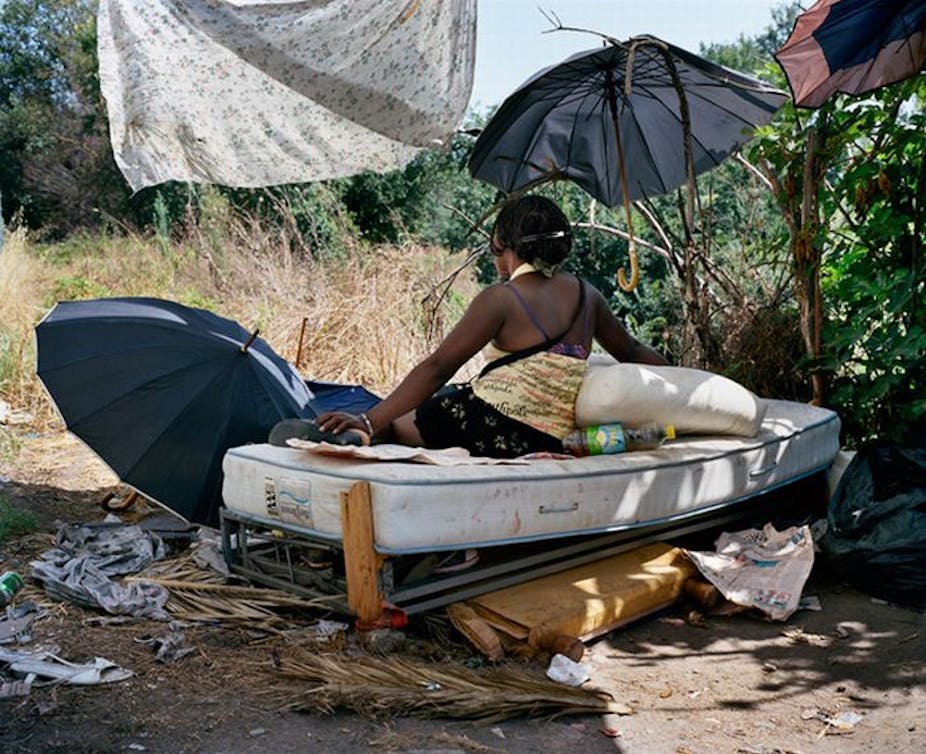It’s been known for some time that antiretroviral medicines could have a role in preventing HIV as well as treating it. Now, the US Food and Drug Administration (FDA) has approved the use of an antiretroviral as pre-exposure prophylaxis to prevent the contraction of HIV.
In 2011, it was announced that people using antiretrovial treatment were far less likely to transmit HIV to sexual partners because it reduced their viral load.
Since then, other studies have shown that HIV-negative people are almost 60% less likely to contract HIV if they take a daily dose of the antiretroviral drug Tenofovir. It seems HIV’s treatment could also be its prevention.
Tenofovir is currently used in combination with other antiretrovirals as treatment for people with HIV. For prevention, it needs to be taken daily. But it doesn’t protect against sexually transmitted infections and is not a contraceptive, which means condoms must still be used.
This raises significant challenges, such as who might benefit and who might be exposed to new risks from the use antiretrovirals as prophylaxis.
My work concerns the likely impact of using antiretrovirals as prophylaxis on female sex workers in developing countries. I will deliver a keynote speech on this topic at the upcoming International AIDS Conference in the United States.
Risk to sex workers
When pre-exposure prophylaxis was first being discussed, sex worker advocates immediately recognised that this regime could have significant effects on the conduct of commercial sex and related public health programmes, policy and legal frameworks.
Clearly, the greatest risk is that condom use will become difficult if clients believe they won’t contract HIV because the sex worker is taking Tenofovir as the “HIV pill” if she’s negative, or as antoretroviral therapy if she’s positive.

Condoms, information, health services and social support are crucial in limiting illnesses, exploitation, abuse, and unwanted pregnancies. However, a shift in resources away from these cornerstones of sexual and reproductive health is likely, as some writers are already advising that HIV-AIDS agencies re-channel funds away from programs, such as behavioural change communication, towards preventative drug treatments.
But although Tenofovir as prevention has been described as a “gamechanger” by UNAIDS director Michel Sidibe, it is important to remember that the success of any biomedical development ultimately relies on human behaviour – getting tested for HIV, putting on condoms, inserting microbicides or taking a pill. This means it is crucial that resources for educational and social support programs must also not be reduced.
Sex workers’ realities
Most sex workers know that millions of lives have been saved by antiretroviral treatment and appreciate the importance of HIV testing and treatment. At the same time, they identify discrimination, financial costs, violence and appalling treatment by health-care workers as powerful barriers to services.
It’s especially difficult for sex workers to protect themselves in cases where sex work is highly criminalised or stigmatised and violence is common. This applies in particular to migrant sex workers.
In many places, voluntary HIV counselling and testing has already been replaced by “provider-initiated” or “opt-out” testing. In many countries, sex workers must prove they’ve attended clinics or are infection free (usually with a document provided by a clinic).
Arrested sex workers are tested at police stations in some countries and, in many places, there are extra punishments for those found to be HIV positive. In many countries, confidentiality doesn’t exist and a positive result can have drastic consequences:
Treatment is also fraught for sex workers who have far less access to services and medicines of all kinds. And while antiretrovirals are desperately lacking for some, there’s a risk that drugs, such as Tenofovir, will be pressed on sex workers by governments, non-government organisations or sex industry bosses.
Some readers may imagine compulsory or coerced medication is an exceptional or a “worst case” scenario. But sex workers will be less quick to dismiss this possibility in light of their experiences of having treatment imposed upon them by outreach teams or medical agencies who have little regard for privacy concerns. In most of the world, sex workers have few safeguards against such abuses.
Sex workers need to respond to the change in the dynamics of HIV prevention and treatment by identifying what approaches work for them and demanding that governments and health agencies include their viewpoints. This process begins with involving sex workers in programming and removing laws that prevent them from exercising their rights as citizens and workers.
In that sense, HIV prophylaxis and treatment as prevention are just parts of a larger game that needs to change if sex workers health and human rights are to be protected.

